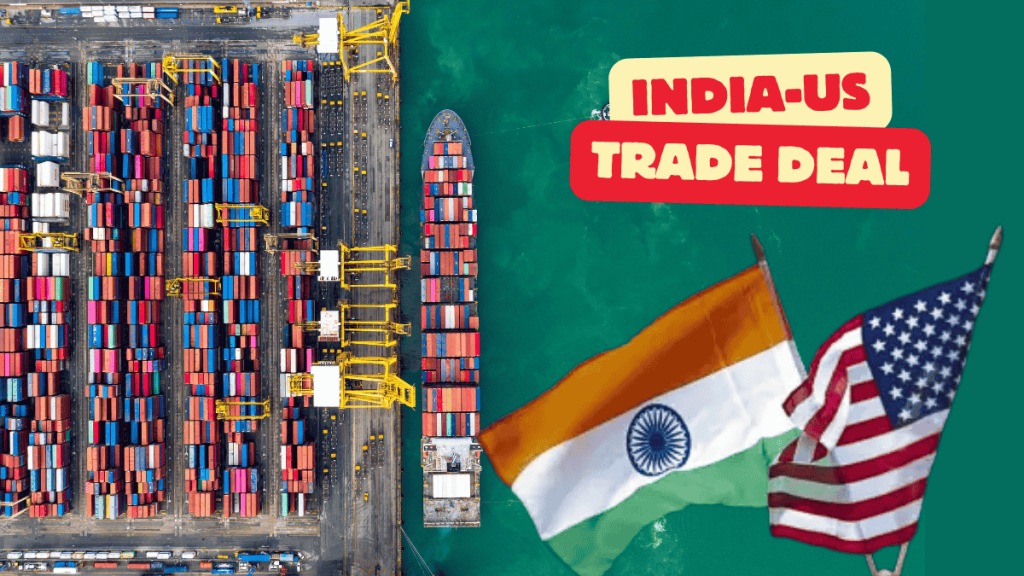Trade talks between India and the US entered their seventh day on Wednesday, with Indian officials extending their stay in Washington. According to PTI, the delegation’s visit—originally planned for just two days—began on June 26 and has continued into this week. The deal is currently facing a few roadblocks; however, if both sides are able to strike an agreement, it could significantly impact India, as the US is one of its biggest trade partners.
Can India avoid high 26% tariff
The most immediate and visible benefit for India would be the avoidance of the additional 26 per cent US tariffs on Indian goods, preserving market access for its exporters.
On April 2, the US imposed an additional 26 per cent reciprocal tariff on Indian goods but suspended it for 90 days to keep the door open for trade negotiations with different countries. However, the 10 per cent baseline tariff imposed by America remains in place. India is seeking full exemption from the additional 26 per cent tariff.
The US has not given a nod to it yet. If accepted, it would prevent a significant cost increase on Indian exports to the US, maintaining competitiveness.
India pushes hard for duty cuts on labour-intensive sectors
India is strongly demanding the full elimination of US tariffs on its labour-intensive exports such as garments, footwear, leather goods, carpets, and gems and jewellery. These sectors contributed over $14.3 billion to India’s exports to the US in FY2025 and employ millions, especially in states like Uttar Pradesh, Tamil Nadu, Gujarat, and West Bengal.
Currently, these goods face US tariffs ranging from 8 per cent to 20 per cent, which Indian exporters say puts them at a disadvantage in the American market. Economists suggest these sectors could gain $4–6 billion annually over the next three years if duty relief is phased in.
According to ETCFO, “Sectors like textiles (duty: 14–17 per cent), jewellery (6–8 per cent), and footwear (10–20 per cent) could see an export upside of $4–6 billion annually over three years if duty relief is phased in, assuming export elasticity of 1.2x,” said Arsh Mogre, Lead Economist at PL Capital.
Interim deal could unlock full Bilateral Trade Agreement
The trade deal is seen as part of a broader vision (‘Mission 500’) to boost bilateral investment and ease capital movement between the two countries. If both countries conclude an interim trade agreement, it could pave the way for a more comprehensive Bilateral Trade Agreement (BTA) by September or October 2025. The BTA seeks to more than double bilateral trade to $500 billion by 2030, up from the current $191 billion.
Challenges remain over agriculture and dairy
The US is demanding duty concessions on agriculture and dairy. India has taken a firm stand against this, citing the livelihood of millions of small farmers and the political sensitivity of opening up the dairy market. India has not opened up the dairy sector for any of its trading partners in free trade pacts the country has signed so far.
The US is pressing for tariff cuts on products like apples, tree nuts, and genetically modified crops, but India’s government officials have declared dairy a “red line.”
Could harm India’s trade surplus with the US
India maintained a trade surplus with the US in 2024, exporting goods worth $87.4 billion—up 4.5 per cent from 2023—while imports from the US stood at $41.8 billion. This led to a $45.7 billion trade surplus, a 5.4 per cent increase over the previous year.
According to GTRI, India exported goods worth $86.5 billion to the US in FY2025, up from $77.5 billion in FY2024. Exports rose by 21.78 per cent in April–May this year alone. Imports from the US also increased by 25.8 per cent to $8.87 billion.
While India has offered to reduce its Most Favoured Nation (MFN) duties on US goods as part of the deal, Washington appears unwilling to reciprocate.
GTRI says the US is not ready to scrap either its high MFN tariffs or the country-specific duties that currently stand at 26 per cent, proposing instead a limited reduction to 10 per cent—still a significant surcharge that could negate any meaningful market access for Indian exporters.
India can have deeper economic engagement with the US
The deal would reinforce India’s position as a strategic ally of the US, potentially leading to cooperation in sectors like defence, energy (oil and LNG), and advanced manufacturing, which may have longer-term economic benefits. According to Financial Times, India has already increased its crude oil imports from the US, reducing purchases from Russia, Saudi Arabia, and Iraq by over 70 per cent in the first four months of 2025.
Trump confident of sealing trade agreement
US President Donald Trump on Tuesday said the two countries are close to finalising a trade deal. Speaking aboard Air Force One, he said, “Right now, India doesn’t accept anybody in. I think India is going to do that. If they do that, we’re going to have a deal for less, much less tariffs.”
US Treasury Secretary Scott Bessent also expressed optimism. “We are very close with India,” he told Fox News. He said the deal would lower tariffs on US exports to India and help India avoid the planned tariff hike.

